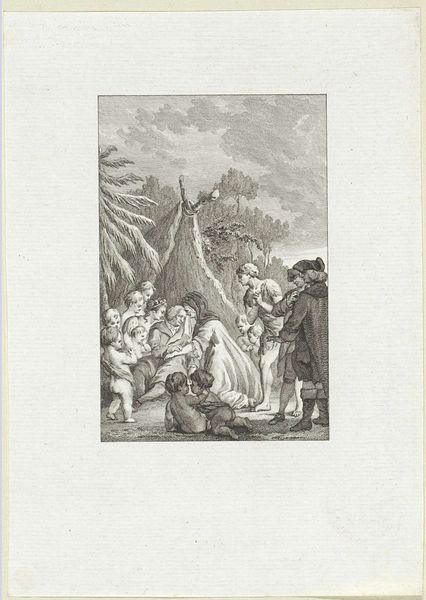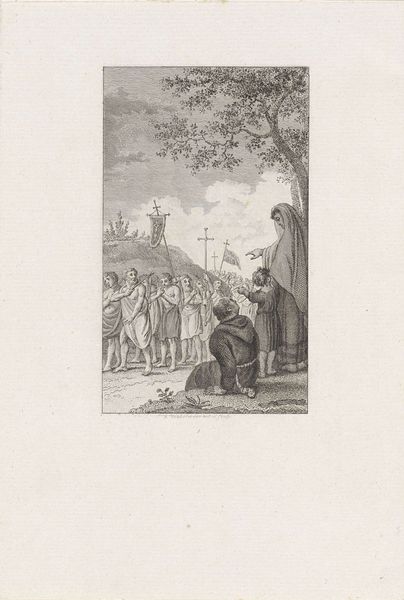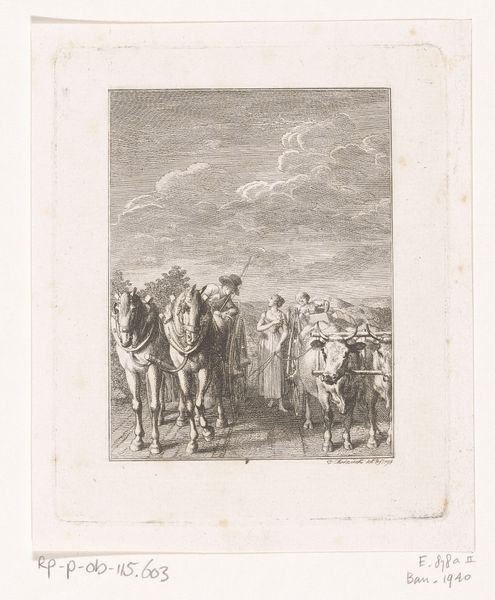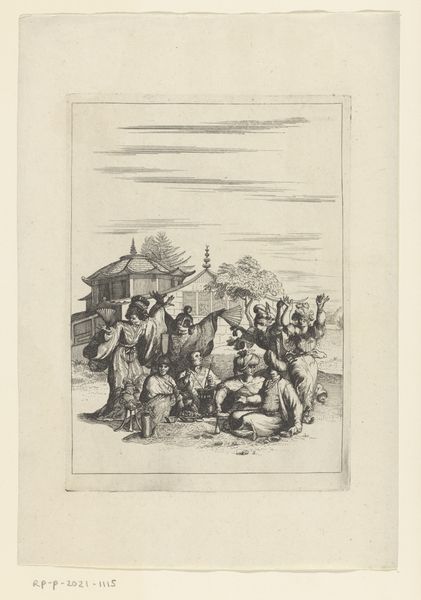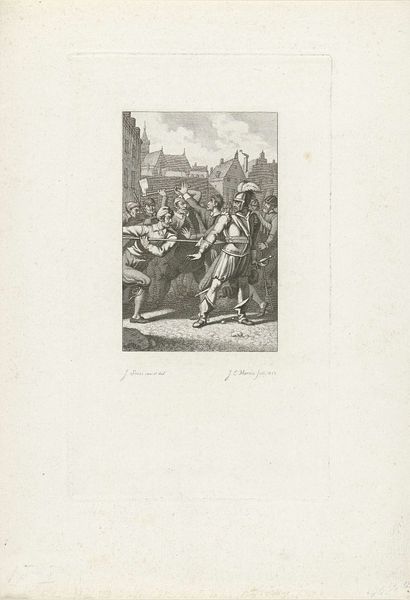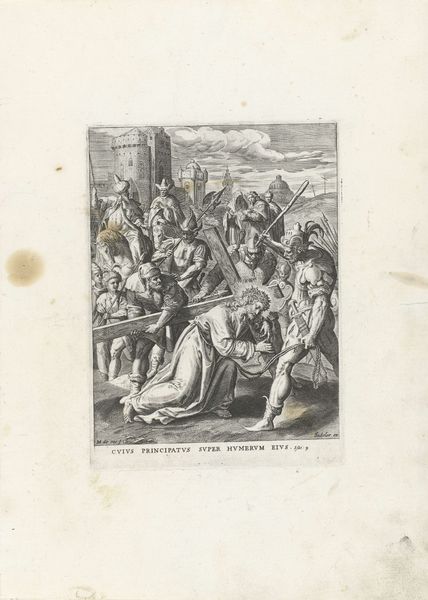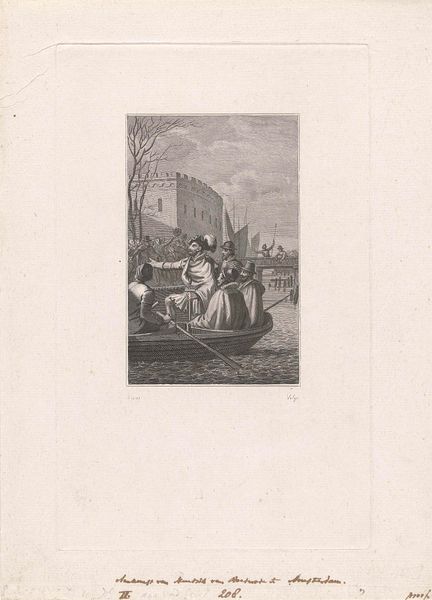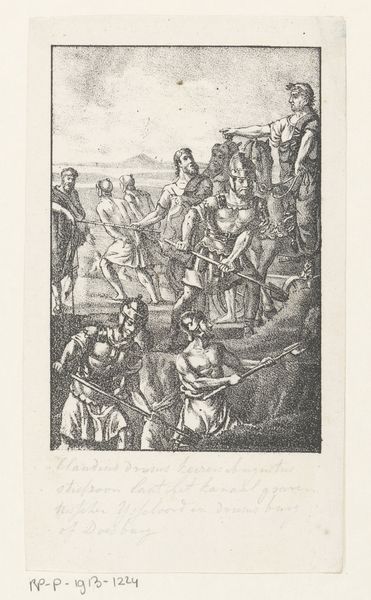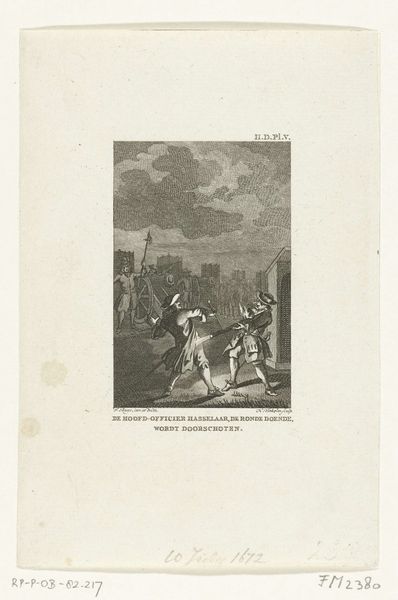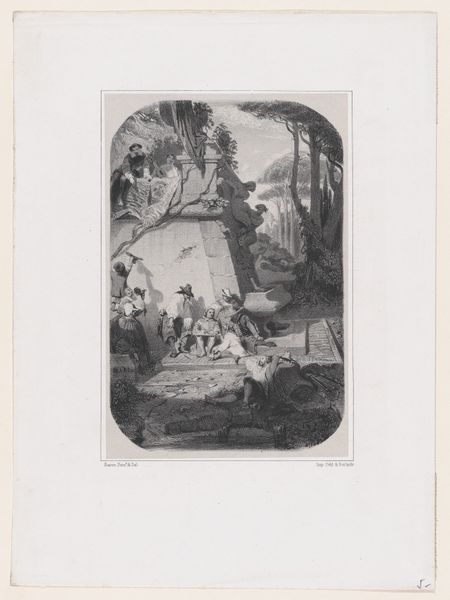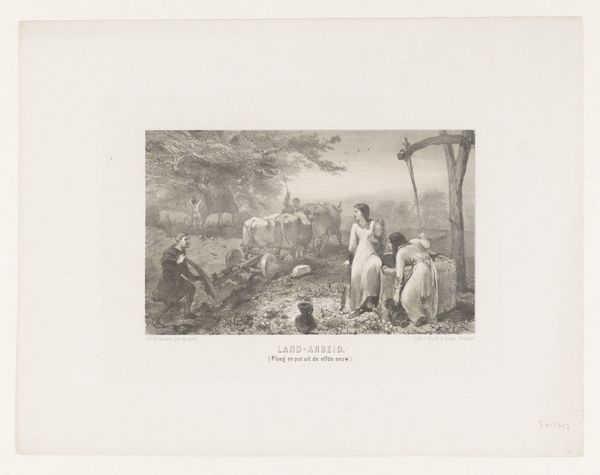
Dimensions: height 237 mm, width 148 mm
Copyright: Rijks Museum: Open Domain
Editor: Here we have Reinier Vinkeles' "Dorpelingen oogsten hooi," or "Villagers Harvesting Hay," an engraving and print made sometime between 1751 and 1816. It has such a busy, active feel to it; everyone seems to be caught up in the labor of the harvest. What captures your attention most in this piece? Curator: It's true, isn't it? It's a snapshot of life, etched in ink, where the mundane becomes rather grand. I’m drawn to the foreground figures – that kneeling man wrestling with the hay, for example. Do you see the implied weight, the strain in his posture? And the child beside him, caught in the very drama of living? Vinkeles pulls us into the toil, doesn't he? Almost like we can smell the hay and feel the sweat! How does the presence of the church in the background affect your reading? Editor: It is like you are thrown into the middle of the work, it’s kind of messy with the figures overlapping and dark. And the church… well, it brings a sense of community, maybe, and this constant presence overlooking their lives? Almost as if it's blessed – and burdened – by their efforts. Do you think it was common to picture these kinds of daily activities? Curator: Precisely! It certainly roots the scene in a specific time and place, and gives context to the harvest – sustenance both physical and perhaps, spiritual! And genre scenes like these? They became increasingly popular during this period. Think of them as early reality TV, documenting and perhaps romanticizing the lives of everyday people. Editor: It makes it really easy to relate to even today. Thanks, I learned a lot! Curator: My pleasure! It's fascinating how art can make us see the past – and present – in fresh, vibrant ways.
Comments
No comments
Be the first to comment and join the conversation on the ultimate creative platform.

